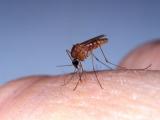In adults, Zika virus infection can cause a diverse array of serious neurologic complications, according to a case series of patients during Brazil's outbreak who were treated at a neurology referral hospital in Rio de Janeiro.
In other developments, another research group from Brazil reported a reduction in the birth rate in one of the country's biggest cities and the US Food and Drug Administration (FDA) recently issued an emergency use authorization (EUA) for the first test that can simultaneously assess for Zika, all dengue serotypes, chikungunya, and West Nile virus.
Patient series finds diverse problems, unusual features
In the neurologic complication study, researchers reported on 40 adults who were hospitalized with acute-onset neurologic symptoms who were evaluated for Zika infection Dec 5, 2015, and May 10, 2016. The team published its findings today in JAMA Neurology.
Of the 40 patients, 35 had evidence of recent Zika infection in blood or cerebrospinal fluid (CSF). Of those who were positive for Zika virus, 27 had Guillain-Barre syndrome (GBS), 5 had encephalitis, 2 had transverse myelitis, and 1 had chronic inflammatory demyelinating polyneuropathy.
Among the 27 with GBS, 13 had cranial nerve involvement and three had facial numbness or trouble swallowing. Of the patients with encephalitis, two had accompanying neuromuscular findings, seen with other flavivirus neurologic complications.
Serum and CSF were tested for Zika virus using real-time reverse-transcriptase polymerase chain reaction (rRT-PCR) and IgM antibody assays. Researchers also recorded clinical data, radiographic and electrophysiological test findings, and 3-month function outcomes.
Nine of the patients required intensive care unit treatment and five required mechanical ventilation.
The authors found Zika IgM in the CSF of many of the patients, often at significantly higher levels than in blood, which they said is a sign of direct Zika virus penetration. Two patients tested positive for dengue on serum but not CSF samples.
When they compared the number of complications with baseline[MS1] levels in Brazil, they found that the incidences of GBS and encephalitis rose 6-fold and 3.5-fold compared with the period before the outbreak.
They concluded that Zika infection is linked to a diverse array of serious neurologic disorders and that serologic and molecular tests on blood and CSF can be useful as a less expensive and more accessible alternative to plaque reduction neutralization testing in developing countries.
A good start, more in-depth epi studies needed
In an accompanying editorial, two US neurologists wrote that it's critical to understand the spectrum and frequency of Zika-related neurologic disease. The new report, they said, serves as an initial approach, though more in-depth epidemiologic investigations will be needed to establish the frequency and the related risk factors. The authors are Kenneth Tyler, MD, with the University of Colorado School of Medicine, and Karen Roos, MD, with Indiana University School of Medicine.
Regarding the clinical findings, the Brazilian group found a slightly longer interval between GBS and Zika onset—a median of 10 days, with a range of 4 to 22 days—compared with earlier reports. Tyler and Roos also highlighted that the study authors found a mixed frequency of GBS subtypes, including some with unusual features.
They noted that the high number of patients with Zika virus IgM in both serum and CSF is intriguing if confirmed in other studies, because it points to intrathecal synthesis and likely reflects a Zika target within the central nervous system. "Understanding the complexities of flavivirus antibody responses will likely be critical for both diagnosing Zika virus infections and understanding their pathogenesis," they wrote.
Birth rate drop, EUA for Zika test
Births in the Brazilian city of Sao Paulo dropped 6.37% in the last half of 2016, likely because of Zika-related panic, a study team reported in the Aug 8 early online edition of Annals of Epidemiology. The researchers examined birth data from January 2007 to June 2016 to estimate the expected number of births in Sao Paulo. They noted that the drop came about 9 months after Zika media coverage began, hinting that people may have panicked due to reports of Zika-related microcephaly. They said other factors could also explain the pattern, such as the country's ongoing economic crisis, which has been under way since 2014.
The FDA on Aug 11 issued an EUA for a multiplex test to assess for Zika and other flaviviruses that was developed by the Center for Infection and Immunity (CII) at Columbia University's Mailman School. The multiplex test, called the CII-ArboViroPlex rRT-PCR Test, also contains a host gene to ensure the accuracy of results. According to a Columbia University press release, the National Institute of Allergy and Infectious Diseases (NIAID) asked the FDA to consider issuing an EUA for the test for use in its multicountry study on Zika in infants and pregnancy. The test is the second this month to receive FDA EUA authorization: On Aug 2 the agency issued an EUA for Thermo Fisher Scientific's TaqPath Zika Virus Kit, an RT-PCR test to detect Zika RNA in human blood and urine.
See also:
Aug 14 JAMA Neurol abstract
Aug 14 JAMA Neurol editorial
Aug 14 JAMA press release
Aug 8 Ann Epidemiol abstract
Aug 11 and Aug 2 FDA EUA announcements
Aug 14 Columbia University press release
Aug 11 and Aug 2 FDA EUA announcements
Aug 3 Thermo Fisher Scientific press release




















